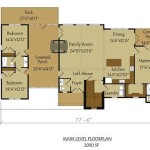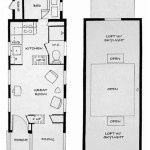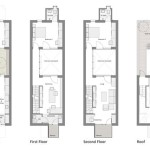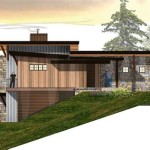Bird houses plans are detailed instructions and diagrams that guide the construction of structures specifically designed to provide shelter and nesting sites for birds. These plans typically include specifications for materials, dimensions, and assembly methods, ensuring that the resulting birdhouses meet the specific needs and preferences of different bird species.
Whether you’re a seasoned bird enthusiast or a nature-loving homeowner, building birdhouses can be a rewarding and fulfilling experience. By providing birds with a safe and comfortable place to nest, you can not only support local wildlife but also enhance your outdoor space with their cheerful presence.
In this article, we will delve into the intricacies of bird houses plans, exploring the various considerations, materials, and design principles involved in creating functional and aesthetically pleasing birdhouses. We will also provide step-by-step instructions and resources to help you embark on your own birdhouse-building adventure.
When crafting bird houses plans, there are several key points to consider:
- Materials: Wood, plastic, or recycled materials
- Dimensions: Based on bird species and nesting habits
- Entrance hole: Size and shape varies with bird species
- Ventilation: Holes or gaps for air circulation
- Drainage: Holes or openings to prevent water buildup
- Predator protection: Features to deter squirrels and cats
- Aesthetics: Design and color to complement surroundings
- Maintenance: Cleaning and inspection considerations
By incorporating these elements into your bird houses plans, you can create functional and inviting nesting sites that will be appreciated by birds and bird enthusiasts alike.
Materials: Wood, plastic, or recycled materials
Wood
Wood is a classic and versatile material for bird houses, offering durability, insulation, and natural aesthetics. Cedar, redwood, and cypress are popular choices due to their resistance to rot and decay. Pine and fir are also suitable options, but may require additional weatherproofing. When selecting wood for bird houses, choose untreated and unfinished lumber to avoid exposing birds to harmful chemicals.
Plastic
Plastic is a lightweight and weather-resistant material that can be molded into various shapes and sizes. Recycled plastic, such as HDPE (high-density polyethylene), is an eco-friendly option that can provide durability and longevity. However, plastic bird houses can become hot in direct sunlight and may not offer the same insulation as wood. It’s important to choose plastic that is UV-resistant to prevent fading and cracking.
Recycled materials
Recycled materials, such as cardboard, aluminum cans, and plastic bottles, can be repurposed to create unique and sustainable bird houses. Cardboard bird houses are a temporary and inexpensive option, but they require careful weatherproofing to prevent moisture damage. Aluminum cans can be transformed into durable and weather-resistant bird houses with proper cleaning and preparation. Plastic bottles can be used to create small, decorative bird houses, but they may not withstand extreme weather conditions.
Regardless of the material you choose, ensure that it is safe for birds and provides adequate protection from the elements. Avoid using treated wood or materials that may release harmful fumes or splinters.
Dimensions: Based on bird species and nesting habits
The dimensions of a bird house are crucial to ensure the comfort and safety of its avian occupants. Different bird species have specific nesting preferences, and the size of the bird house should accommodate these needs.
- Small birds: Small birds, such as wrens, chickadees, and bluebirds, prefer cozy bird houses with a floor space of around 4×4 inches and a height of 6-8 inches. The entrance hole should be about 1 1/8 inches in diameter.
- Medium birds: Medium-sized birds, such as robins, sparrows, and finches, require slightly larger bird houses with a floor space of around 6×6 inches and a height of 8-10 inches. The entrance hole should be about 1 1/2 inches in diameter.
- Large birds: Large birds, such as woodpeckers, flickers, and owls, need spacious bird houses with a floor space of at least 8×8 inches and a height of 12-15 inches. The entrance hole should be 2 inches or larger in diameter.
- House shape: The shape of the bird house can also affect its suitability for different bird species. Birds prefer bird houses that resemble natural cavities, such as tree hollows or rock crevices. Houses with sloped roofs and rounded corners provide better protection from rain and wind.
It’s important to note that these dimensions are general guidelines, and the specific requirements may vary depending on the bird species and local climate conditions. Researching the specific needs of the birds in your area will help you create a bird house that is both functional and inviting.
Entrance hole: Size and shape varies with bird species
The entrance hole of a bird house is a critical design element that affects the usability and safety of the house for its intended occupants. The size and shape of the entrance hole should be carefully considered to accommodate the specific needs of different bird species.
- Size: The size of the entrance hole should be large enough for the target bird species to enter and exit comfortably, but not so large that it allows predators to enter. As a general rule, the diameter of the entrance hole should be about 1/3 to 1/2 the diameter of the bird’s head.
- Shape: The shape of the entrance hole can also vary depending on the bird species. Most birds prefer round or oval entrance holes, as they are easier to enter and exit. Some birds, such as woodpeckers, may prefer rectangular or square entrance holes.
- Placement: The placement of the entrance hole is also important. It should be high enough off the ground to deter predators, but low enough for the birds to easily access. The entrance hole should also be facing away from prevailing winds and rain.
- Perch: Some bird houses may include a small perch below the entrance hole. This provides a convenient landing spot for the birds and can help to prevent them from slipping out of the entrance hole.
By carefully considering the size, shape, and placement of the entrance hole, you can create a bird house that is both functional and attractive to its intended occupants.
Ventilation: Holes or gaps for air circulation
Proper ventilation is essential for the health and well-being of birds, and it should be a key consideration in any bird houses plans. Ventilation holes or gaps allow for air circulation within the bird house, which helps to regulate temperature, prevent moisture buildup, and reduce the risk of respiratory problems for the birds.
Ventilation holes should be placed near the top of the bird house, opposite the entrance hole. This creates a natural airflow that helps to draw fresh air in and expel stale air out. The size and number of ventilation holes will vary depending on the size of the bird house and the climate in which it is located. As a general rule, there should be at least one ventilation hole for every 10 square inches of floor space.
Ventilation holes should be small enough to prevent birds from escaping or predators from entering, but large enough to allow for adequate airflow. A good rule of thumb is to make the ventilation holes about 1/4 inch in diameter.
In addition to ventilation holes, some bird houses may also include a small gap between the roof and the walls. This gap allows for additional airflow and helps to prevent moisture from becoming trapped inside the bird house. However, the gap should be small enough to prevent birds from escaping or predators from entering.
By incorporating proper ventilation into your bird houses plans, you can create a healthy and comfortable environment for your feathered friends.
Drainage: Holes or openings to prevent water buildup
Drainage holes or openings are essential in bird houses plans to prevent water buildup, which can lead to mold, mildew, and other health problems for the birds. Water can enter the bird house through rain, snow, or condensation, and it’s important to provide a way for it to escape.
- Drainage holes: Drainage holes are small holes or openings placed in the floor or bottom of the bird house. They allow water to drain out of the house and prevent it from accumulating. Drainage holes should be at least 1/4 inch in diameter and should be placed in areas where water is likely to collect, such as the corners of the floor or under the perch.
- Gap between roof and walls: In addition to drainage holes, some bird houses may also include a small gap between the roof and the walls. This gap allows for additional drainage and ventilation, and it helps to prevent moisture from becoming trapped inside the bird house.
- Sloped roof: A sloped roof helps to shed water and prevent it from pooling on the roof of the bird house. The slope should be at least 30 degrees to ensure proper drainage.
- Ventilation holes: Ventilation holes, which are discussed in more detail in the previous section, also help to prevent water buildup by allowing air to circulate within the bird house. This helps to dry out any moisture that may accumulate.
By incorporating proper drainage into your bird houses plans, you can help to ensure that your feathered friends stay dry and healthy.
Predator protection: Features to deter squirrels and cats
Squirrels and cats are common predators of birds and their eggs. To protect your feathered friends, it’s important to incorporate predator protection features into your bird houses plans.
Squirrels
Squirrels are agile climbers and can easily access bird houses that are placed low to the ground or on tree trunks. To deter squirrels, consider the following features:
- Squirrel baffle: A squirrel baffle is a device that is placed around the pole or tree trunk that supports the bird house. It creates a physical barrier that prevents squirrels from climbing up to the bird house.
- Sloped roof: A sloped roof makes it difficult for squirrels to gain a foothold on the bird house. The slope should be at least 30 degrees to be effective.
- Slick materials: Squirrels have difficulty gripping smooth surfaces. Consider using slick materials, such as metal or plastic, for the exterior of the bird house.
- Nest box with small entrance hole: Squirrels cannot fit through small openings. Make sure the entrance hole of the bird house is small enough to prevent squirrels from entering.
Cats
Cats are natural predators of birds. To deter cats, consider the following features:
- Place bird houses high off the ground: Cats cannot jump very high, so placing bird houses at least 6 feet off the ground will help to deter them.
- Enclose the bird house: Enclosing the bird house with wire mesh or chicken wire will prevent cats from reaching the birds inside.
- Use predator guards: Predator guards are devices that are placed around the entrance hole of the bird house. They have sharp points or spikes that deter cats from approaching the entrance hole.
By incorporating these predator protection features into your bird houses plans, you can help to keep your feathered friends safe from harm.
Aesthetics: Design and color to complement surroundings
In addition to providing a functional and safe nesting space for birds, bird houses can also be aesthetically pleasing and complement the surrounding environment. When designing and building bird houses, consider the following factors:
- Design: The design of the bird house should be in keeping with the architectural style of your home and garden. If you have a traditional home, a classic bird house with a pitched roof and decorative trim may be a good choice. If you have a more modern home, a contemporary bird house with a sleek design and clean lines may be more suitable.
- Color: The color of the bird house should complement the colors of your home and garden. If you have a white house with black trim, a black and white bird house would be a good choice. If you have a brick house with a red roof, a red and white bird house would be a good choice.
- Materials: The materials used to build the bird house should be weather-resistant and durable. Wood is a popular choice for bird houses because it is strong and can be painted or stained to match any dcor. Vinyl is another good choice because it is weather-resistant and easy to clean.
- Placement: The placement of the bird house is also important. Choose a location that is sheltered from the wind and rain, and that is not too close to trees or shrubs where predators can hide. The bird house should also be placed high enough off the ground to deter predators, but not so high that it is difficult for birds to reach.
By considering these factors, you can create a bird house that is both functional and aesthetically pleasing, and that will provide a safe and comfortable nesting space for your feathered friends.
Maintenance: Cleaning and inspection considerations
Regular maintenance is essential to ensure that your bird houses remain in good condition and provide a safe and comfortable nesting space for your feathered friends. Here are some key maintenance considerations:
- Clean the bird house regularly: Bird houses should be cleaned at least once a year, or more often if they are heavily used. To clean the bird house, remove all nesting material and debris. Wash the bird house with a mild soap and water solution, and rinse it thoroughly. Allow the bird house to dry completely before replacing it.
- Repair any damage: Inspect the bird house for any damage, such as cracks, holes, or broken parts. Repair any damage promptly to prevent the bird house from becoming unusable or unsafe. If the bird house is made of wood, you may need to apply a fresh coat of paint or stain to protect it from the elements.
- Check for pests: Birds houses can attract pests, such as mites, fleas, and lice. If you notice any pests in the bird house, treat it with an appropriate insecticide. Follow the instructions on the insecticide label carefully to ensure that it is safe for birds.
- Monitor the bird house for activity: Keep an eye on the bird house to see if it is being used by birds. If you notice that the bird house is not being used, there may be a problem with the design, location, or maintenance of the bird house. Make any necessary adjustments to ensure that the bird house is attractive to birds.
By following these maintenance tips, you can help to ensure that your bird houses provide a safe and comfortable nesting space for your feathered friends for many years to come.










Related Posts








